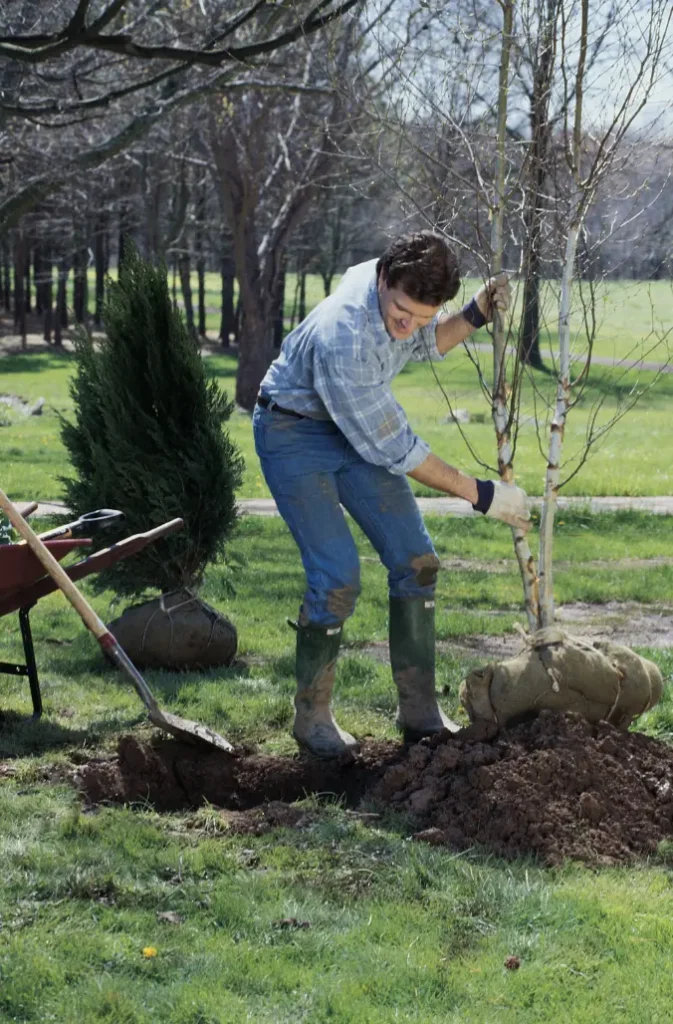
Introduction
Planting trees is one of the most rewarding activities for any gardener. Not only do trees beautify your landscape, but they also improve air quality, provide shade, and create a habitat for wildlife. However, to ensure your trees thrive for years to come, it’s crucial to plant them at the right time of year. But when exactly is the best time to plant trees? In this guide, we’ll explore the optimal seasons for tree planting, answer common questions, and provide expert tips to help you get the most out of your tree-planting efforts.
Understanding the Best Time to Plant Trees
Choosing the best time to plant trees depends on several factors, including your local climate, the type of tree you’re planting, and the specific conditions in your garden. However, in general, there are two main seasons that are ideal for tree planting: spring and fall.
Why Spring is a Great Time for Planting Trees
Spring is often considered the best time to plant trees, especially in regions with cold winters. The soil is warming up, which encourages root growth, and the trees have the entire growing season ahead of them to establish themselves before the next winter. In most areas, the best time to plant in spring is after the last frost but before the hot summer weather kicks in.
FAQs:
- Q: Why is early spring ideal for tree planting?
- A: Early spring offers a balance of warm soil and cool air, which promotes strong root development while reducing the stress on the tree from hot temperatures.
- Q: Can I plant trees in late spring?
- A: Yes, but be cautious as the temperatures rise. Ensure the tree gets plenty of water and mulch to help retain soil moisture.
Fall Planting: Another Optimal Time
Fall is another excellent time for planting trees, particularly in areas with mild winters. The soil is still warm from the summer, which supports root growth, and the cooler air temperatures reduce the stress on the tree. Planting in the fall gives the tree several months to establish roots before the dormancy of winter.
FAQs:
- Q: Why is fall planting beneficial?
- A: Fall planting allows trees to focus on root growth rather than foliage, leading to stronger, more established trees by spring.
- Q: What is the best month to plant trees in the fall?
- A: The best time is typically from late September to early November, depending on your local climate.
Factors to Consider When Planting Trees
While spring and fall are generally the best times to plant trees, several factors can influence your decision.
1. Local Climate
Your local climate plays a significant role in determining the best time to plant trees. In regions with harsh winters, early spring is often better to avoid damage from freezing temperatures. Conversely, in areas with mild winters, fall can be ideal as the tree has time to establish itself before the growing season.
2. Tree Species
Different tree species have varying requirements. For instance, deciduous trees like oaks and maples tend to do well with fall planting, while evergreens might prefer spring planting. Always research the specific needs of the tree species you’re planting.
FAQs:
- Q: Are there trees that should only be planted in spring or fall?
- A: Yes, for example, bare-root trees are best planted in early spring, while many flowering trees do well when planted in the fall.
3. Soil Conditions
Before planting, check the soil conditions. The soil should be moist but not waterlogged, with good drainage to support root growth. If your soil is compacted, consider aerating it before planting to ensure the roots can establish themselves.
FAQs:
- Q: How do I know if my soil is ready for planting?
- A: Perform a simple squeeze test—if the soil crumbles easily, it’s ready. If it forms a sticky ball, it’s too wet.
Common Mistakes to Avoid When Planting Trees
To ensure your trees have the best chance to thrive, avoid these common planting mistakes:
- Planting Too Deep: The tree’s root flare (where the roots start to spread at the base of the trunk) should be at or slightly above ground level.
- Ignoring Soil Preparation: Proper soil preparation is essential. Amend the soil if necessary and ensure it’s well-draining.
- Overwatering or Underwatering: Newly planted trees need consistent moisture but avoid waterlogging the roots.
- Not Mulching: Mulching helps retain soil moisture, regulate soil temperature, and reduce weed competition.
Conclusion
Planting trees at the right time of year is crucial for their long-term health and success. By choosing to plant in either spring or fall, you give your trees the best chance to establish strong roots and thrive in your landscape. Remember to consider your local climate, the specific needs of the tree species, and the condition of your soil. With the right preparation and timing, your trees will grow strong and healthy for years to come.

Byron Center Tree Services is your professional tree services company serving Byron Center and all of Kent & Ottawa Counties. If you have an emergency tree situation or are interested in any of our services, please reach out to us at (616) 739-6240 today!
